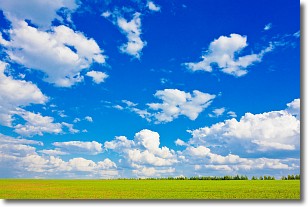Weather Alert in Ohio
Flood Warning issued April 3 at 12:57PM EDT by NWS Northern Indiana
AREAS AFFECTED: Defiance, OH; Fulton, OH; Williams, OH
DESCRIPTION: ...The Flood Warning is extended for the following rivers in Ohio... Indiana... Blanchard River at Ottawa affecting Putnam County. Saint Joseph River Ohio near St. Joe River Ft. Wayne affecting Allen IN County. ...The Flood Warning continues for the following rivers in Ohio... Indiana... Maumee River near Defiance affecting Defiance and Henry Counties. Maumee River at Fort Wayne affecting Allen IN and Paulding Counties. Saint Joseph River Ohio below Montpelier affecting Williams County. Saint Joseph River Ohio near Newville affecting Allen IN, De Kalb and Defiance Counties. Saint Marys River near Decatur affecting Allen IN, Adams and Van Wert Counties. Tiffin River at Stryker affecting Fulton OH, Defiance and Williams Counties. For the Blanchard River...including Ottawa...Minor flooding is forecast. For the Maumee River...including Fort Wayne, Defiance, Napoleon... Moderate flooding is forecast. For the Saint Joseph River Ohio...including Montpelier, Newville, St. Joe River Ft. Wayne...Moderate flooding is forecast. For the Saint Marys River...including Decatur, St. Mary's River near Fort Wayne...Moderate flooding is forecast. For the Tiffin River...including Stryker...Moderate flooding is forecast. * WHAT...Minor flooding is occurring and moderate flooding is forecast. * WHERE...Tiffin River at Stryker. * WHEN...Until further notice. * IMPACTS...At 15.0 feet, Several rural buildings flood and flooding begins to affect residents in the village of Stryker. Many roads become impassible. * ADDITIONAL DETAILS... - At 12:00 PM EDT Thursday the stage was 13.2 feet. - Recent Activity...The maximum river stage in the 24 hours ending at 12:00 PM EDT Thursday was 13.2 feet. - Forecast...The river is expected to rise to a crest of 15.4 feet Sunday morning. - Flood stage is 11.0 feet. - http://www.weather.gov/safety/flood
INSTRUCTION: Stay tuned to further developments by listening to your local radio, television, or NOAA Weather Radio for further information. Caution is urged when walking near riverbanks. Motorists should not attempt to drive around barricades or drive cars through flooded areas. Turn around, don't drown when encountering flooded roads. Most flood deaths occur in vehicles. Detailed river forecasts and additional information can be found at www.weather.gov/iwx under Rivers and Lakes. The next statement will be issued Friday morning at 700 AM EDT.
Want more detail? Get the Complete 7 Day and Night Detailed Forecast!
Current U.S. National Radar--Current
The Current National Weather Radar is shown below with a UTC Time (subtract 5 hours from UTC to get Eastern Time).

National Weather Forecast--Current
The Current National Weather Forecast and National Weather Map are shown below.

National Weather Forecast for Tomorrow
Tomorrow National Weather Forecast and Tomorrow National Weather Map are show below.

North America Water Vapor (Moisture)
This map shows recent moisture content over North America. Bright and colored areas show high moisture (ie, clouds); brown indicates very little moisture present; black indicates no moisture.

Weather Topic: What are Contrails?
Home - Education - Cloud Types - Contrails
 Next Topic: Cumulonimbus Clouds
Next Topic: Cumulonimbus Clouds
A contrail is an artificial cloud, created by the passing of an
aircraft.
Contrails form because water vapor in the exhaust of aircraft engines is suspended
in the air under certain temperatures and humidity conditions. These contrails
are called exhaust contrails.
Another type of contrail can form due to a temporary reduction in air pressure
moving over the plane's surface, causing condensation.
These are called aerodynamic contrails.
When you can see your breath on a cold day, it is also because of condensation.
The reason contrails last longer than the condensation from your breath is
because the water in contrails freezes into ice particles.
Next Topic: Cumulonimbus Clouds
Weather Topic: What are Cumulus Clouds?
Home - Education - Cloud Types - Cumulus Clouds
 Next Topic: Drizzle
Next Topic: Drizzle
Cumulus clouds are fluffy and textured with rounded tops, and
may have flat bottoms. The border of a cumulus cloud
is clearly defined, and can have the appearance of cotton or cauliflower.
Cumulus clouds form at low altitudes (rarely above 2 km) but can grow very tall,
becoming cumulus congestus and possibly the even taller cumulonimbus clouds.
When cumulus clouds become taller, they have a greater chance of producing precipitation.
Next Topic: Drizzle
Current conditions powered by WeatherAPI.com




